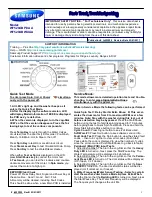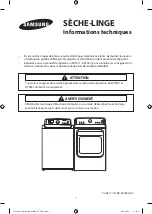
Page EN-13
Loading the dishwasher
NOTICE
Risk of damage!
Long objects which protrude from the
dish racks may block the spraying arms
or damage the seals. The dishes are not
suffi ciently cleaned.
■
Ensure that long objects are posi-
tioned only horizontally in the dish
racks.
■
Place dishes in the dish racks in such a
way that none of the objects can slip
out of the dishwasher when it is next
opened or slip out of the dish racks
during operation.
■
Use the height adjustment function
for the upper dish rack.
• Remove large and stuck-on scraps of
food from the dishes so that the sieve and
filter do not become blocked.
• Soak dishes with dried-on or burnt-on
foods in water before placing them in the
dishwasher.
• Position the dishes with the opening to
the bottom so that the water can run off
(e.g. for glasses).
Unsuitable dishes
The following dishes and crockery are unsuit-
able for cleaning using a dishwasher as this
will damage them.
– Delicate glasses: may become matt and
milky
– Decorations on dishes/glasses/cutlery:
may fade.
– Silver: may tarnish.
– Anodised aluminium: may discolour.
– Tin: may turn matt.
– Wood: may warp and tear
– Horn/heat-sensitive plastic: may become
deformed.
Loading the dishwasher
– Glued items of cutlery: may come apart.
– Handmade items: may be damaged.
– Electrical components of kitchen applianc-
es such as mixers: may cause an electric
shock.
• Observe the instructions in user manuals
and data sheets.
Cutlery drawer
1 = soup spoons, 2 = forks, 3 = knives,
4 = teaspoons, 5 = dessert spoons, 6 = serv-
ing spoons, 7 = serving forks, 8 = sauce ladles
• Leave space in between individual items
of cutlery.
• Put long utensils in the middle.
• Lay out cutlery in such a way that the wa-
ter can drip away easily.
The left-hand, larger part of the cut-
lery drawer can be raised at the side
so that cutlery can drip dry more easily.
















































